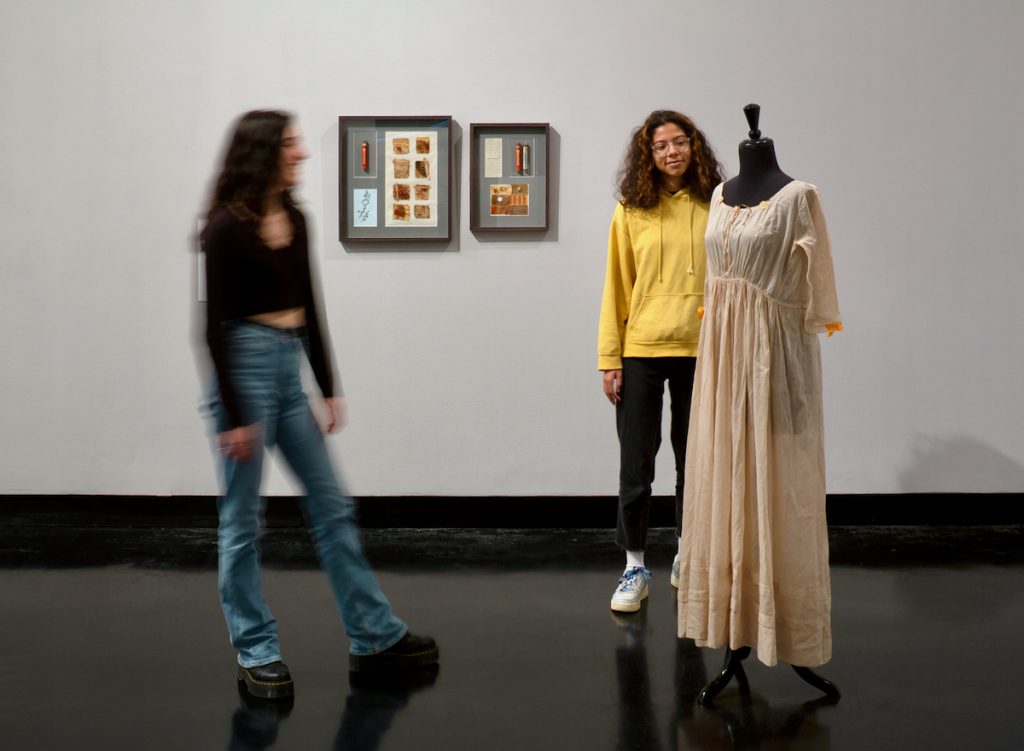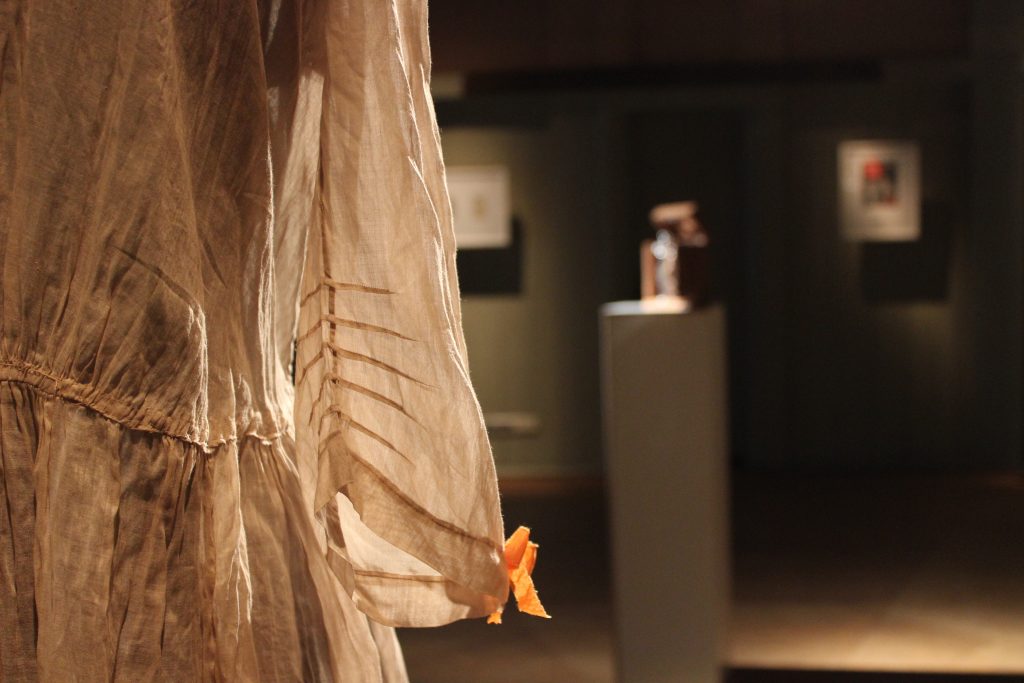This altered antique romantic era maternity dress has been stained with walnut husks, and embroidered with safflower and madder root dyed silk (front and hem), and Prontosil dyed silk (back shoulders). The neckline is decorated with madder root dyed flowers and the cuffs are trimmed with safflower dyed bows.

“The Romantic Disease Dress” (2014) is impregnated with the extracted DNA of killed Mycobacterium tuberculosis (TB). The organisms have been rendered sterile using a validated process used in whole genome sequencing of TB.
Many natural dyes have also traditionally been used as medicines. This practice is so widespread that it may be that those dyes were, in fact, a by-product of the production of natural remedies in ancient times.
Three such dyes: madder root, safflower and walnut husks were used as ancient treatments for phthisis (the old name for tuberculosis (TB)). The pink/brown madder root is the oldest dye used by man since antiquity. Safflower contains both yellow and pink dyes depending on levels of acidity/alkalinity. The yellow frequently being used to dye the robes of monks and travelling healers and the bright pink being used to dye ribbons used to bind legal documents, becoming known as ‘red tape’. Walnut husks (the part outside the shell that is discarded before the nut finds its way into supermarkets) dyes natural fibres shades of brown, from beige to rich dark brown.
There seems to be an intrinsic link between dye and medicine, even in modern times. In the 1930’s the textile dye company Bayer worked on the idea that coal-tar dyes might bind to bacteria and be used to target harmful substances in the body. The idea was suggested by Paul Ehrlich, who was present at Robert Koch’s seminal lecture where he announced he had discovered the cause of TB. Bayer tested hundreds of dyes and finally found a red dye that was effective on a range of organisms, and went into production with the first ‘sulfonamide’ drug, a bright orange red substance they called Prontosil. It was not effective on TB but was widely used in World War II to prevent infection and heralded as a new wonder drug at the time. In the past TB was considered to be hereditary and couples ‘tainted’ by the disease were told not to marry, in some particularly upsetting cases female TB patients were even given forced abortions. The complex relationship between our genetic make-up and TB is now beginning to be revealed by whole genome sequencing of the disease but we must be aware that this may raise other difficult ethical questions.

The work is part of Anna Dumitriu’s project “The Romantic Disease“, which investigates mankind’s strange relationship with the Tuberculosis, from early superstitions about the disease, through the development of antibiotics, to the latest research into whole genome sequencing of bacteria. Supported by The Wellcome Trust.
